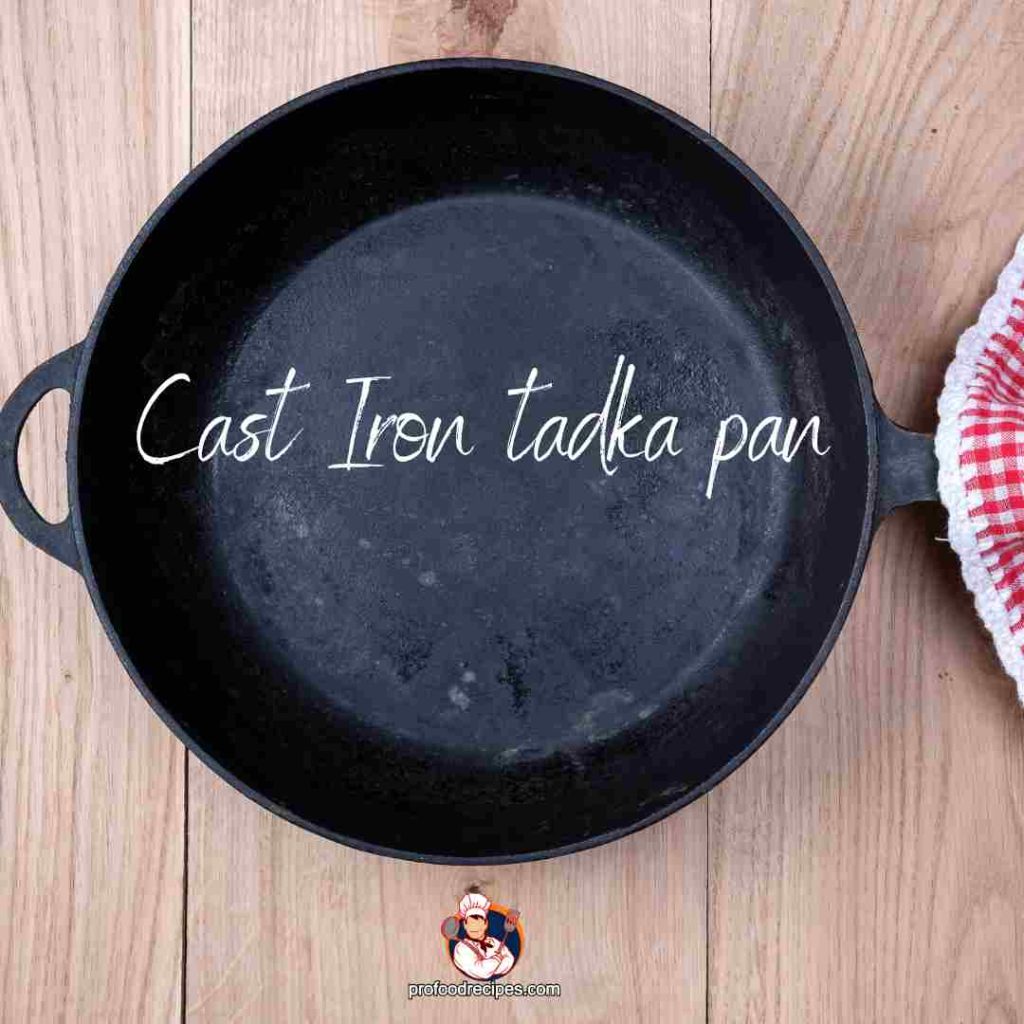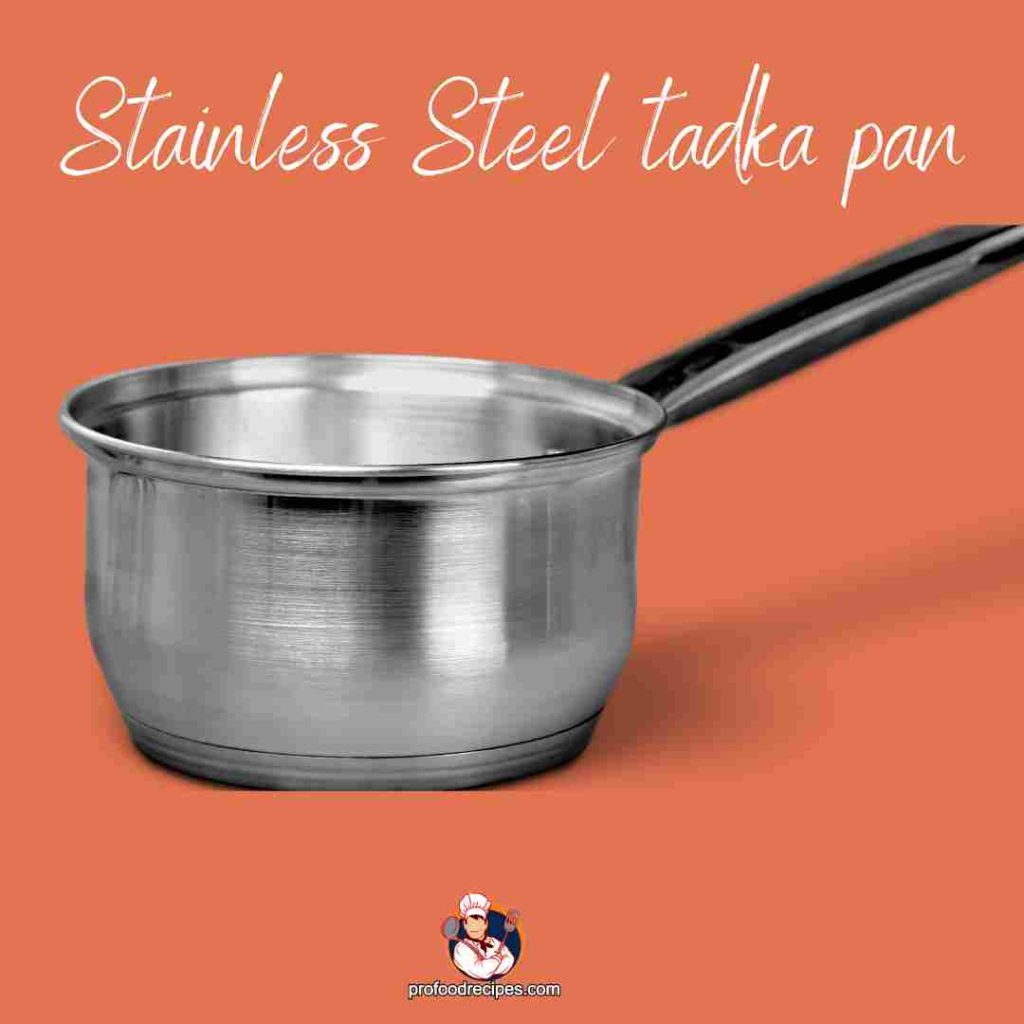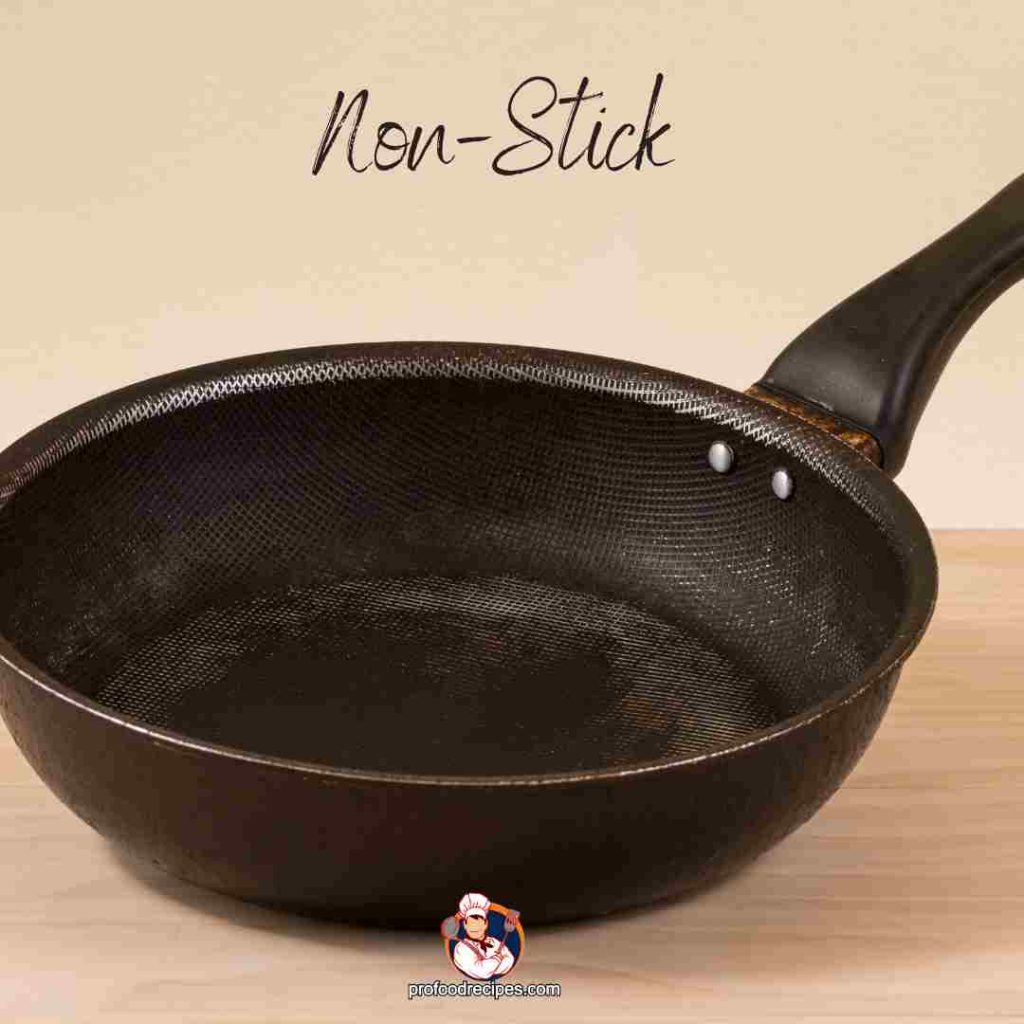Last Updated on March 18, 2023 by Amanda P. Brown
Indian cuisine’s most excellent kitchen appliance is the Tadka pan, which adds aromatic and flavorful Tadka to different dishes. They are smaller and come with a longer handle, making it easier to handle the pan over a hot flame.
Moreover, non-staining, non-reacting, quick cooking, evenly heating, etc., make this pan-compatible, versatile, and incredible cooking weapon. However, if you are considering buying a tadka pan, this article will help you choose the best one.
You can read the following article to know what tadka pan, its uses, and types of pans based on material, shape, and size. By analyzing this information, you will get the best material, a long-lasting, good servicer pan. Let’s scroll below to know the details.
What is a Tadka Pan?
Table of Contents
A Tadka pan is a small pan with deep wells designed so that the whole spices do not jump out of the pan while cooking. The pan looks like a ladder. You can use them to roast or fry whole spices or season them in hot oil, which is added to the main dish.
Moreover, this pan is a beautiful kitchen tool for making dhokla, sabzi, dal, khandvi, sambhar, curry, and many more. In Indian cuisine, you can notice its extensive use.
Depending on the materials and quality, its prices in India range from INR 100 to INR 800. You can get it both online and offline. However, if you want a tasty tadka on your dishes, the key is a good quality tadka pan, which will be a durable and straightforward option.
Read More:
Types of Tadka Pan- Based on Material, Shape, and Size
Tadka pans are usually made of various materials, including aluminum, cast iron, stainless steel, and non-stick. Now let’s discuss the types of pans based on material, shape, and size.
Based on Material
Below are 4 types of tadka pans based on different materials.
1. Aluminum

Generally, aluminum tadka pans are non-reactive, non-toxic, lightweight, and provide excellent heat distribution. These pan’s high-quality anodized coating makes them scratch resistant. Also, they are ideal for making tadka for dal, sambar, rasam, and other gravies.
2. Cast Iron

Cast iron tadka pans are versatile, durable, and excellent at retaining heat for long periods. Also, this pan pre-seasoned with 100% vegetable oil for tadka gives a naturally smooth surface. They also help in faster cooking and save gas.
3. Stainless Steel

Stainless steel tadka pans are corrosion-resistant, lightweight, and simple to clean. Also, they are non-toxic and cook food evenly. Their surfaces of pans are also excellent for browning elements.
4. Non-Stick

The inner coating of the non-stick tadka pan is 100% non-toxic. They use less oil while cooking. Also, the sturdy handles of these non-stick pans are perfect for protecting hands from heat. They are also simple to clean and maintain besides daily use.
Based on Shape
Tadka pans are almost the same shape. They are generally round-shaped and have an elegant look. Therefore, there is not much variation in their shape. Makers design it, so the oil or ingredient doesn’t split out, and the cook’s hand also be safe.
Based on Size
Usually, tadka pans are between 3 to 7 inches in size. So if you want to buy a pan for your kitchen, you can choose it as per your convenience, size, and need. Determine how much food you cook and how much tadka you must make at a time. According to this, fixing the size will be more helpful to you.
How to Use Tadka Pan?
Usually, an extra tadka is needed to perfect the Indian dal and curry dish. It brings your food a different texture, aroma, and savory taste.
However, you can offer this cuisine technique on many savory Indian dishes from dal to sambhar, dhokla, sabzi, curry, khandvi, etc. Let’s discuss how to make tadka using this pan below.
- First, add 2 tablespoons of ghee or oil to a tadka pan. Add 1/2 to 3/4 tsp cumin seeds and fry them on low flame until fragrant.
- Then add -2 whole dry red chilies.
- Add 1/2 to 1 tsp of finely sliced garlic and fry them lightly until fragrant. But don’t brown the garlic because it may taste bitter.
- Add 1/3 tsp red chili powder and 1/8 tsp asafoetida. Then remove from the heat immediately.
- Take down the pan and pour over the hot tadka dal.
- Before serving, you can garnish the dal tadka with coriander leaves. You can also serve this dish with paratha, roti, plain steamed rice, chapati, and butter naan.
- After completing your cooking, clean it properly and store it.
Read More: How to Cook Turkey Fillets in a Pan?
Important Factors While Buying Tadka Pan
While buying a tadka pan, you need to consider some factors. Thus, you will be able to choose the best pan. The factors are- material, design, weight, pan size, etc. Let’s explore them with a brief explanation.
Material Used
The material used in making a tadka pan is the most important. Generally, the material of these pans must be such that they can withstand high temperatures. Moreover, they also need to be made using non-reactive and non-toxic materials. However, the steel material pan is excellent for all these features.
Design
Generally, most tadka pans have a solid handle that doesn’t heat up. This handle is also known as ‘perma Cool.’ These pan handles are designed to provide protection and withstand high temperatures.
This pan makes adding ingredients quickly to the dal/kadi convenient. So, its handles need to be lightweight as well as strong.
Moreover, the handles of these pans are disproportionately long. So that the pan’s handle cannot tilt to one side, they also always have a built-in stand, which helps to retain the pan relaxing on the burner in the center of the handle. Additionally, this pan needs to have such a stand or support.
Weight
If you are looking for a perfect tadka pan for your home kitchen, a too-heavy pan may be inconvenient for your daily use.
So, it would be best to get such a lightweight pan that is easy to operate with one hand.
Pan Size
Generally, the size of the tadka pan may vary based on the burner and family size. However, many times, people mistakenly buy small-sized pans for bigger burners. In this case, you can see that these pans never correctly settle on the burner.
Thus the possibility of oil spill accidents can increase. So when you buy this pan for your kitchen, you must ensure the correct size.
Importance of Tadka Pan in the Kitchen
The tempering process (adding tadka) will take just a few minutes. They are an inseparable part of Indian cuisine. Generally, tempering means releasing the oils and tastes of the original ingredients and doing it in the pan with hot oil or ghee, which enhances the fragrant experience.
However, the regular tadka pan is also used to temper kadi, dal, and dhokla. Also, these pans undergo substantially higher temperatures regularly. Moreover, scratch-resistant, easy to clean, and highly resistant.
Even you don’t have to bother about it heating way. Most of these pans are used on gas stoves. But they have no issue with induction stoves.
How Do You Clean a Tadka Pan?
You don’t use cold water to clean a tadka pan because it is hot; adding cold water can distort and crack it. But using hot water to clean the pan helps remove any spicy, crusty, and food scraps.
In this regard, first, you need to take the kosher salt in the pan. Then scrub it with a stiff plastic brush or chainmail scrubber. After that, with hot water, wash the pan.
Final Verdict
Reviewing the above article, you can say that the tadka pan is best for everyday use. Also, their lightweight, stain-free, simple, clean, and heat-resistant features make them more appealing to everyone.
Moreover, you get different types of these pans based on materials, shape, and size. Among all, the preferable pan is cast iron material. And as the shape is the same for all, there are no recommendations. Moreover, for the pan’s size, you must prioritize your burner size, the main food menu, and the quantity.
You May Also Like to Read:
- What is the Safest Cookware?
- Is Non Stick Cookware Safe?
- How to Cook With Stainless Steel Cookware?
- Gas Vs Electric Smoker – Which One to Choose?
- Flatware Vs Silverware – Which One to Choose?

